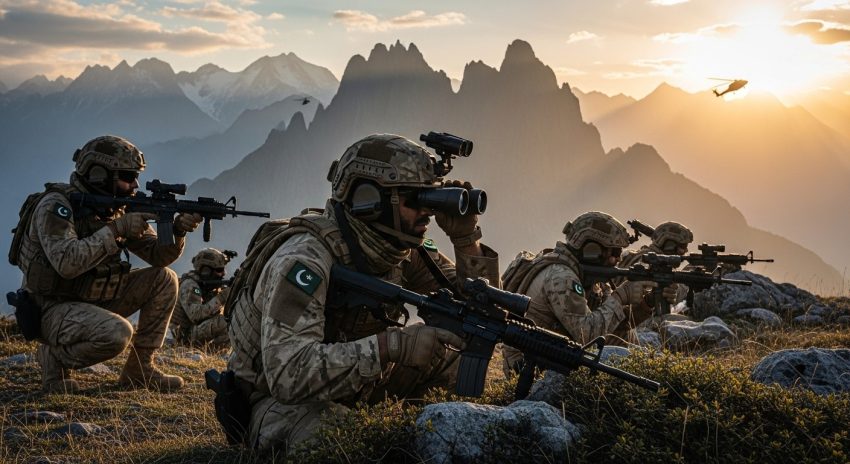Pakistan has always had to deal with tough borders and neighbors who do not play fair. For years, it has been trying to figure out how to modernize its military without destabilizing the fragile democratic system. On November 15, 2025, President Asif Ali Zardari signed the 27th Constitutional Amendment, a major restructuring that merges top leadership roles, abolishes the Chairman Joint Chiefs of Staff Committee, and mandates closer collaboration among the Army, Navy, and Air Force. Some view it as overdue housekeeping in a world where threats come from land, cyberspace, and politics. Others see it as a risky power shift that places too much authority in one set of hands. Grounded in Article 243, which clearly situates the armed forces under the federal government, the reform raises a fundamental question: is this modernization or overreach?
Across the globe, nations have found ways to integrate their armed forces without concentrating power in a single office. In the United States, the Chairman of the Joint Chiefs of Staff coordinates among the Army, Navy, and Air Force to plan and synchronize strategy without directly issuing operational commands. India introduced its Chief of Defence Staff in 2019 with a similar goal: to unify its services under a single planning framework while keeping each branch operationally independent. Pakistan’s new Chief of Defence Forces role follows the same logic, focusing on strengthening joint planning and coordination across services rather than consolidating unchecked authority. These examples show that countries facing complex security challenges often turn to integrated structures to ensure coherent strategy.
While some worry that elevating the Army Chief to Chief of Defence Forces might concentrate authority, the position is intended to coordinate services without overriding civilian oversight or the independence of individual branches. Past conflicts have demonstrated the value of seamless collaboration, and the current model aligns planning, procurement, and joint training to strengthen national readiness against both conventional and emerging threats.
The replacement of the Chairman Joint Chiefs of Staff Committee ensures a more functional structure rather than relying on ceremonial rotations. All services are integrated and represented, including a vice-Chief of Defence Forces rotating between the Navy and Air Force, while pivotal national bodies continue to include all service chiefs. The reform aims for alignment and cooperation rather than scattering decision-making across symbolic posts.
Concerns that the nuclear command chain could tilt in favor of the Army are misplaced. Oversight remains with civilian-led authorities, with all service chiefs participating. The amendment deals with conventional forces’ organization and coordination, leaving nuclear stewardship firmly under elected leadership.
Some critics suggest that the Air Force might become subordinated to land-centric command. In reality, joint structures provide a broader platform for all branches to voice their priorities, allowing the Air Force to strengthen its role in modern strategic planning. Integration enhances, rather than diminishes, influence in an era where air and space capabilities are central to national security.
Questions about judicial immunity are addressed by understanding its purpose. The provision protects routine administrative decisions from delays in litigation but does not remove accountability. Parliamentary committees, executive oversight, and constitutional provisions remain fully in place. Similar measures exist in other democracies to prevent strategic decisions from being stalled by court interventions.
Concerns about tenure extensions and personality-driven leadership are unfounded. Terms remain governed by civilian authorities, and stability in leadership ensures continuity without entrenching any individual. Institutional mechanisms guide promotions and doctrinal updates, prioritizing systems over personalities and professionalizing leadership.
Some have suggested that the Navy and Air Force might be systematically diminished, but evidence points to the opposite. Integration elevates their priorities, giving both services a stronger voice in long-term planning and national strategy. Smaller services often gain influence in joint structures because decisions focus on shared objectives rather than branch-specific concerns.
Finally, the amendment reinforces the principle that institutions outrank individuals. Codified structures replace ad hoc practices, ensuring that decisions are driven by laws and enduring procedures rather than personal preference. Civilian leadership remains supreme, guiding strategy, setting priorities, and maintaining constitutional control over all armed services.
The 27th Constitutional Amendment is about making Pakistan’s defence more effective, not sidelining civilian authorities. By bringing the Army, Navy, and Air Force together under clearly defined structures, and learning from international models, the reform improves coordination and strategic planning. Most importantly, it ensures that civilian leaders remain firmly at the helm, guaranteeing that national security and democracy advance together.














